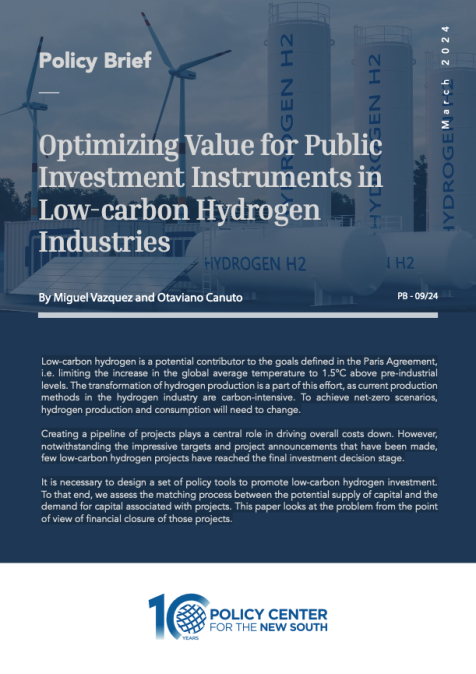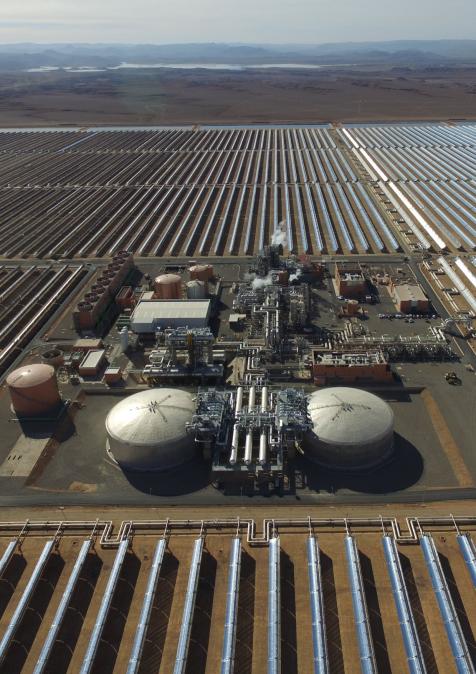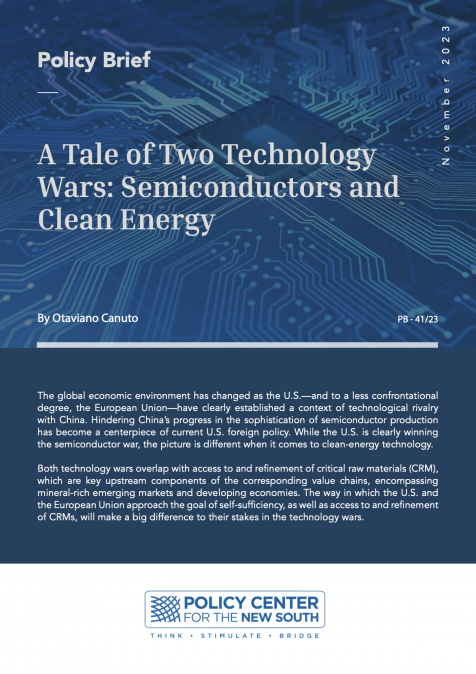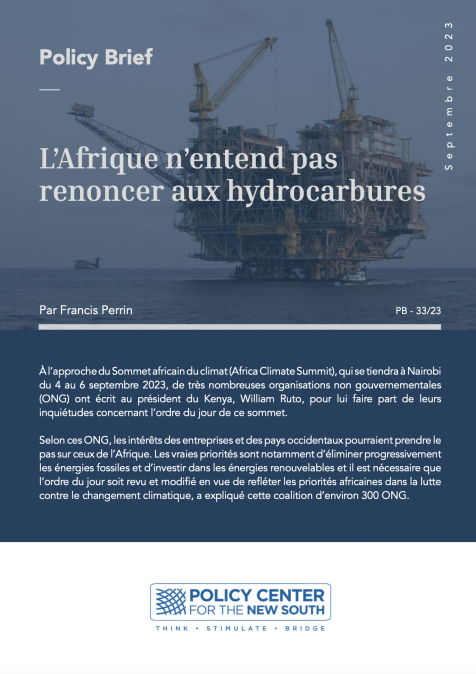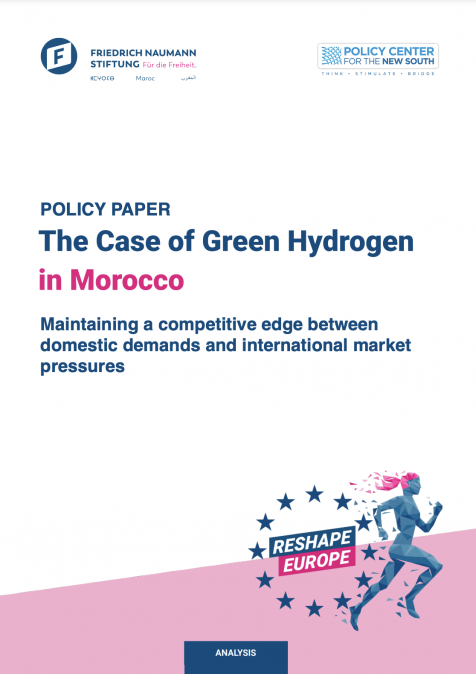Publications /
Opinion
This article was initially published on globaldev.blog in English, French and Spanish.
How can the world achieve higher levels of decarbonization without compromising economic development? This column explores the case of Morocco, a developing country committed to contributing to the global effort against climate change. Assessment of possible decarbonization pathways suggests that particular attention should be paid to expanded penetration of renewable energy to meet future electricity demand. Financial and non-financial incentives will be needed to reduce the economic cost of the transition.
The climate crisis is a latent threat that has been brewing for several years. Its consequences affect both individuals and economies. Tackling climate change is the 13th Sustainable Development Goal. As such, many governments committed to take action to address it in the Paris Agreement. But a recent report of the United Nations (UN) Intergovernmental Panel on Climate Change (IPCC) shows that achievements have not lived up to the promises made.
This underscores the urgency of accelerating the pace of global containment of carbon emissions. Countries now face a dual challenge in a worldwide environment punctuated by frequent crises: ensuring economic development and preserving the environment. In this sense, the energy transition can be a crucial element.
Evidence from Morocco
The latest census of greenhouse gas emissions in Morocco shows that they are following an upward trend. They increased by 17% between 2000 and 2016, reaching 86,128 gigagrams of carbon dioxide equivalent in 2016. The energy industry – which consists of electricity and heat production, as well as oil refining – is responsible for 26% of the country's emissions, followed by agriculture (23%) and transport (20%).
Morocco accounts for about 0.2% of global emissions. But its emissions levels are likely to increase over the next few decades, given the country's continued economic development and demographic growth.
To combat climate change, Morocco submitted its revised ‘nationally determined contribution’ (NDC) to the UN Framework Convention on Climate Change in June 2021. In its new NDC, the country set an ambitious target of a 45.5% reduction in emissions instead of 42% compared with the 'business-as-usual' scenario by 2030, including an unconditional target of an 18.3% reduction instead of 17%. In addition, Morocco aims to increase supply security by reducing dependence on energy imports and increasing the use of renewable energy in electricity generation.
According to a recent study, Morocco can achieve its decarbonization goals through extensive electrification of end-use sectors and increased use of renewable energy in the electricity generation mix. In particular, transport, power generation, and, to a lesser extent, residential sectors are all vital sectors for decarbonizing energy consumption.
Economic modeling conducted as part of the same study shows that Morocco can achieve national emissions reductions of the order of 40% and 70% relative to a business-as-usual scenario in a cost-effective manner by 2030 and 2050, respectively. But it should be noted that these calculations are for energy-related greenhouse gas emissions only, excluding land use, land use change, and forestry.
Greater demand for power
Electricity generation in Morocco is dominated by thermal sources, mainly coal, followed by oil and natural gas, all three accounting for 80% of the country's total electricity generation. But this share has experienced a downward trend since the 1990s with increased use of renewable energy.
The renewable sources of solar, wind, and hydro accounted for 19% of the electricity generated in 2020 compared with 15% in 1990 (hydro only). As for nuclear power, Morocco does not currently foresee it playing a significant role in the energy mix of the future due to the high costs and extended period of infrastructure construction, as well as the potential environmental risks.
According to the aforementioned study, the electrification of Morocco's end-use sectors will increase electricity demand. In the context of decarbonization, this demand must be met primarily by renewable energy, which would imply reducing the share of coal in the electricity mix.
But the low production costs of fossil fuels, which have a low marginal price, can affect the profitability of renewable energy projects. Furthermore, the additional renewable electricity capacity injected into the grid can pose new challenges related to grid management.
This means that adequate grid development and increased system flexibility are required. A diverse portfolio of technologies such as Battery Energy Storage Systems (BESS), demand response, pumped hydro storage, and biomass plants can provide such flexibility.
A clear and supportive regulatory framework is needed to enable participation in the renewable energy market and to sustain the development of BESS and other system flexibility tools. Moreover, according to a recent report, concessional and blended financing can also be used to unlock private investment for clean electricity.
Electrifying the transport sector
Reducing the transport sector's carbon footprint is a critical issue in the fight against climate change, given its dependence on fossil fuels and its contribution to emissions. Electric mobility is seen as a promising solution for the low-carbon transition of this sector.
Research shows that several barriers hinder the technology switch from fossil-fueled mobility to electric mobility:
- Electric vehicles (EVs) have higher upfront costs than internal combustion engines, leading to higher investments.
- Electric mobility development is strictly dependent on BESS technology cost improvement, and the development of charging infrastructure.
- Procurement and tendering models commonly center on upfront costs without considering EVs' entire cost structure and benefits.
- Uncertainties about the long-term performance of BESS and a market that is not mature may limit the attractiveness of EVs for public and private investors.
Studies from the United States and Morocco show that a combination of policies to phase out polluting vehicles and introduce low-carbon technologies are needed. These policies can take the form of indirect incentives, such as emissions and life-cycle caps on polluting vehicles or driving privileges for users of EVs, such as special lanes, preferential or free parking, and waived tolls.
They can also take the form of direct financial incentives to reduce the higher upfront capital costs of EVs (capital expenditure subsidies or import duty exemptions on vehicles and components) and to encourage customers to buy EVs (purchase rebates).
In addition, significant investment will be needed to develop charging infrastructure and stimulate research and innovation to improve performance and reduce costs. In this sense, Morocco would gain from developing a domestic industry to avoid technological dependence.
A just and cost-effective transition
Any roadmap for decarbonization must be cost-effective and socio-economically sustainable to ensure that no one is left behind.
The need for increased investment to drive decarbonization is inescapable. These expenditures, mainly borne by the state, risk burdening the public debt. Hence the need for financial and non-financial incentives specific to the different sectors of the economy to support the transition.
Financial measures would mainly cover incentives on the capital expenditures of low-carbon technologies, like renewable energy for the power sector, EVs for the transport sector, efficiency interventions for the industry and tertiary sectors, and heat pumps, solar thermal and induction boilers for the agriculture and residential sectors.
They could also include the removal of subsidies for fossil fuels in the power sector and the gradual implementation of a carbon pricing scheme. Public development for grid infrastructure will also be needed to sustain sectors' decarbonization.
Non-financial measures may include reforms to the regulatory and institutional framework governing energy projects to stimulate private sector participation. The liquefied natural gas subsidy reform will need to be addressed while providing protection mechanisms for the most vulnerable social segment. In addition, defining technical and environmental standards will be essential for new construction and renovation and for specific sectors.
In the long run, the increase in investment should be offset by the decrease in the social cost of carbon, thus reducing the total economic cost of the transition. In addition, cleaner technologies have the potential to increase productivity.
Ultimately, the energy transition will create new jobs and industries while transforming others, if not eliminating them. Employment and industrial competitiveness must therefore be preserved. In this sense, Morocco should address the challenge of converting the workforce from carbon-intensive activities to greener alternatives and ensure that enough new jobs are created in clean industries and related sectors.

